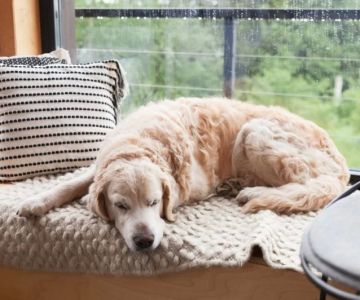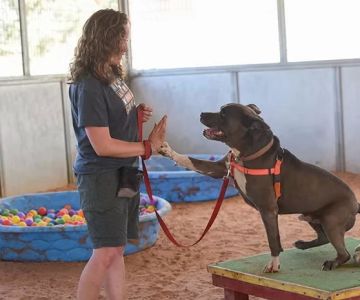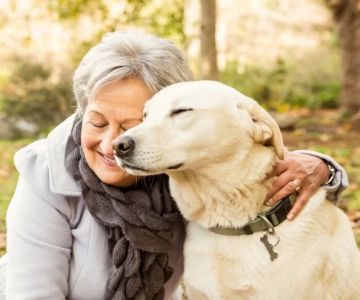How to Train Dogs to Be Calm During Car Rides: Tips for a Stress-Free Journey
Taking your dog on a car ride can be a fun experience, but it’s not always a stress-free one. Many dogs experience anxiety or excitement when traveling, which can make the journey difficult for both the pet and the owner. Fortunately, with proper training and preparation, you can teach your dog to be calm and comfortable during car rides. In this guide, we’ll share effective strategies and tips on how to train your dog for smooth, enjoyable car trips.
1. Understand Why Your Dog Gets Anxious During Car Rides
Before jumping into training techniques, it’s important to understand why your dog may get anxious during car rides. Dogs might feel uneasy for various reasons, including:
- - Motion sickness: Just like humans, dogs can experience nausea when they’re in a moving vehicle.
- - Fear of travel: Some dogs associate car rides with trips to the vet or other negative experiences, which creates anxiety.
- - Excitement: For some dogs, being in a car simply triggers too much excitement, leading to restlessness or excessive barking.
Once you identify the cause of your dog’s anxiety, you can choose the appropriate training methods to help calm them down during trips.
2. Start with Short Car Rides
The best way to begin training your dog for car rides is to start small. Begin with short trips to familiar, positive locations. For example, you can drive around the block or head to a nearby park. The key here is to create positive associations with the car.
During these short trips, keep your dog calm by offering rewards and praise for calm behavior. If your dog gets anxious, don’t punish them; instead, focus on reinforcing good behavior by rewarding them when they remain calm.
3. Create a Comfortable Space in the Car
For your dog to feel comfortable during a car ride, it’s important to make the car environment as calming as possible. Here are some tips to create a safe and relaxing space:
- - Use a Dog Seat Belt or Carrier: Safety should always come first. A dog seat belt or carrier can keep your dog secure and prevent them from roaming around, which can contribute to anxiety.
- - Bring Their Favorite Items: Whether it’s a blanket, a favorite toy, or a treat, familiar objects can help provide comfort during the journey.
- - Ensure Proper Ventilation: Make sure the car is well-ventilated and not too hot or cold. Dogs, especially those with long fur, can become overheated easily.
4. Desensitize Your Dog to the Car
One effective method for reducing car anxiety is desensitization. This involves gradually getting your dog used to being in the car without it moving. Here’s how to do it:
- - Start by sitting in the parked car with your dog for a few minutes each day.
- - Gradually increase the duration of time you spend in the car.
- - Over time, slowly introduce movement by starting the engine and taking short drives.
- - Reward your dog with praise and treats for calm behavior during each step.
The goal of desensitization is to help your dog associate the car with positive experiences, not fear or discomfort.
5. Use Calming Aids if Necessary
In some cases, dogs may require extra help to manage their anxiety. Consider using calming aids such as:
- - Calming Supplements: There are many natural supplements available, such as CBD oil, valerian root, or pheromone sprays, that may help reduce anxiety.
- - Thundershirts: These anxiety-reducing shirts apply gentle pressure, which can help calm your dog during car rides.
- - Music or White Noise: Playing calming music or white noise can help mask external sounds that might trigger anxiety, such as loud traffic or sirens.
6. Be Consistent and Patient
Training your dog to be calm during car rides takes time and patience. It’s important to stay consistent with your approach and avoid rushing the process. Every dog is different, and while some may learn quickly, others may need more time and repetition to feel at ease during car rides.
It’s also essential to keep the car rides pleasant and stress-free. If your dog associates the car with negative experiences, it will be harder to train them to enjoy it. So, keep training sessions positive, and remember that calm behavior should always be rewarded.
7. Real-Life Example: A Success Story
Meet Charlie, a golden retriever with a severe case of car anxiety. His owners, Tom and Sarah, began by taking short trips around their neighborhood, rewarding Charlie every time he remained calm. Over time, they increased the length of the trips, always ensuring that Charlie’s comfort was a top priority. They also used a dog seat belt to keep him secure, which helped him feel safe. After a few months, Charlie was able to enjoy long road trips with his family without excessive anxiety. Tom and Sarah were thrilled with the progress and felt more confident taking Charlie on their vacations.
8. Conclusion: A Calm Dog Means a Calm Ride
Training your dog to be calm during car rides is a process that requires patience, consistency, and the right approach. By starting with short trips, creating a comfortable environment, and using desensitization techniques, you can help your dog enjoy car rides. If needed, consider using calming aids to assist in the process. Remember, the more positive experiences your dog has in the car, the more likely they will look forward to the next trip. For more expert tips and advice on pet care, visit Hidden Brook Veterinary to find the best products and services for your pet’s well-being.











